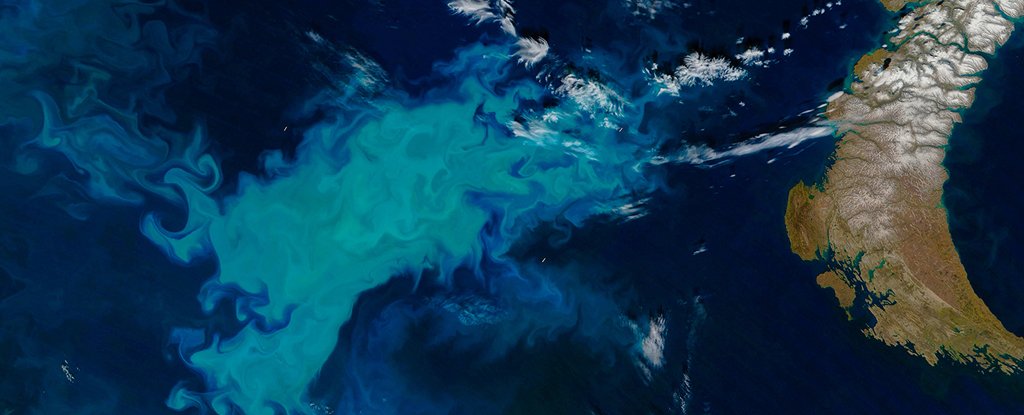Products You May Like
There’s a major change happening in the Arctic. Dark waters are blooming with algae, as sunlight floods spaces long obscured by sheets of ice.
Over the past two decades, there’s been a 57 percent increase in phytoplankton in the Arctic ocean, an analysis by researchers from Stanford University has revealed.
That’s outpaced scientist’s expectations, and it’s changing the way the ocean stores carbon, as well as sucking up resources needed for the rest of the ecosystem. And no one’s sure what it means.
“The rates are really important in terms of how much food there is for the rest of the ecosystem,” says Earth system scientist, Kevin Arrigo.
“It’s also important because this is one of the main ways that CO2 is pulled out of the atmosphere and into the ocean.”
At first glance this expansion of the photosynthesising part of the food chain shouldn’t be all that surprising. Global warming has caused the Arctic’s ice sheets to wither away over the decades, opening up new frontiers for phytoplankton to blossom.
But according to the researchers, from around 2009, the rate at which new open water was being exposed dropped off significantly.
By all accounts, this should have been followed by a similar decline in greenery. After all, no matter how much the Sun shines, population numbers should taper off as the amount of available nitrogen and other essential elements gets used up.
But that’s not what happened. This expansion at the base of the food pyramid – described in eco-jargon as a gain in the rate of net primary production (NPP) – just kept going.
“The increase in NPP over the past decade is due almost exclusively to a recent increase in phytoplankton biomass,” says Arrigo.
It’s hard to know whether we should be alarmed or appreciative. After all, more green stuff means more food for herbivores, which means more meat for the carnivores.
Not to mention more carbon being locked away in organic molecules.
But the Arctic Ocean isn’t really a big player when it comes to sinking carbon. Especially if vanishing sea ice simply makes way for more marine traffic.
And as Arrigo puts it, life in the Arctic is also better adapted to having plenty of ice around.
“There’s going to be winners and losers,” he says.
More to the point, the extended surge in NPP observed by the team has been perplexing enough to force them to look at existing explanations and asked what they might have missed.
The study’s lead author, environmental scientist Kate Lewis, explains it was initially assumed there just wasn’t a big store of nutrients to chew through, a question that’s been addressed previously by the team’s studies.
“We knew the Arctic had increased production in the last few years, but it seemed possible the system was just recycling the same store of nutrients,” says Lewis.
“Our study shows that’s not the case. Phytoplankton are absorbing more carbon year after year as new nutrients come into this ocean. That was unexpected, and it has big ecological impacts.”
Getting a grip on the influx of nutrients is easier said than done since it depends so much on the complexities of ocean currents spreading mixes of different materials through water columns and following trends that are also at the whim of a changing global climate.
Even just getting to this point in mapping the changes in phytoplankton required a huge rethink on how to measure the shades of colour that are traditionally used to analyse NPP.
“Algorithms that work everywhere else in the world – that look at the colour of the ocean to judge how much phytoplankton are there – do not work in the Arctic at all,” says Arrigo.
Armed with improved, Arctic-specific processes, Lewis and her team can now be confident that the changes we’re seeing in the planet’s far north do point to a sustained blooming of producers fed by nutrients pouring in.
Further studies on our planet’s vast circulating network of atmospheric and oceanic streams could help us better nail down what to expect of this vast algal bloom and what it means for the Arctic’s future.
This research was published in Science.
